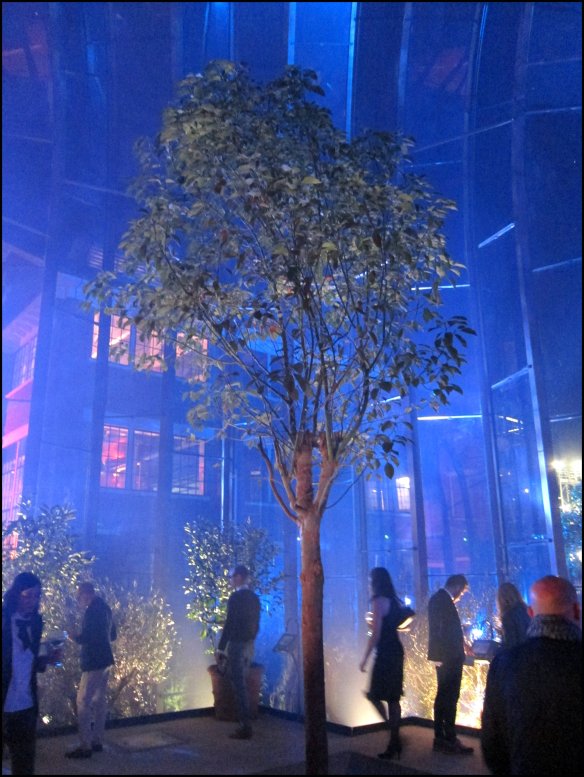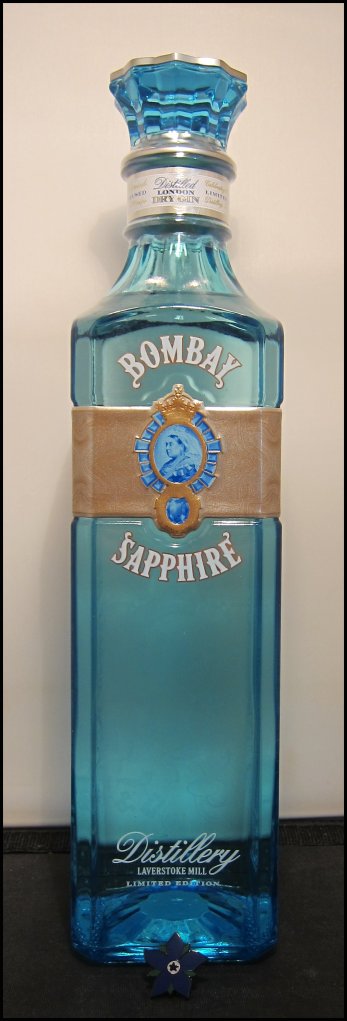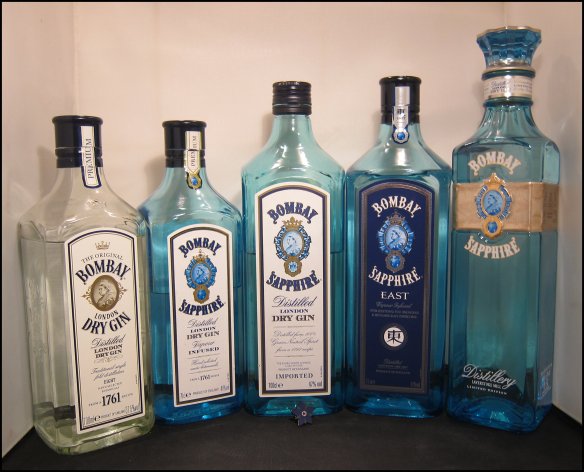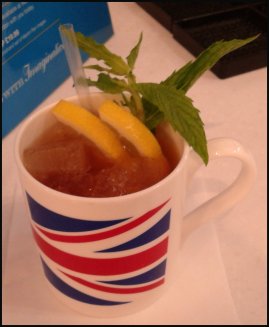Yesterday saw the grand opening of the Bombay Sapphire Distillery at Laverstoke Mill in Hampshire. Since the creation of Bombay Dry in 1960, Bombay Sapphire in 1987, and Bombay Sapphire East in 2011, the gins have lacked a home base that would allow people, both trade and public, to visit.
Across the world, there has been a rise in “Destination Distilling”; that is, the idea of a distillery being something more than a production facility, becoming an attraction for tourists to visit.
Plymouth Gin has been open for the public to tour since 1985 and has had it’s present visitors centre since 2007, Beefeater opened their centre earlier this year, and income from visitors is now an integral part of the business plan for most new distilleries.
Bombay Sapphire’s new home for their distillery and visitors centre is in North Hampshire and has come after years of works and million of pounds of investment.
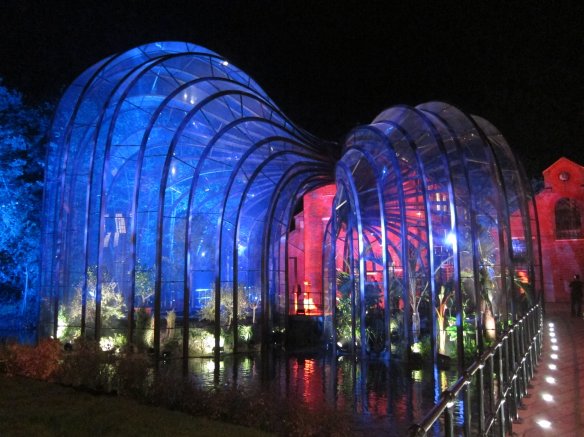
The Glasshouses (Mediterranean and Tropical) growing specimens of all of the botanicals in Bombay Sapphire. They are heat from the excess heat from the stills.
Laverstoke Mill operated as a paper mill from 1719 to 1963. From 1725, it held the sole contract for the production of the Bank of England’s banknote paper, at one time providing the paper for over 100 countries and colonies in the British Empire. In the second half of the 20th Century, however, the mill closed and fell into disrepair, until it was discovered as a potential location for a new distillery.
The new Bombay Sapphire Distillery had its grand opening on 17th September 2014 and I was lucky enough to be able to attend.
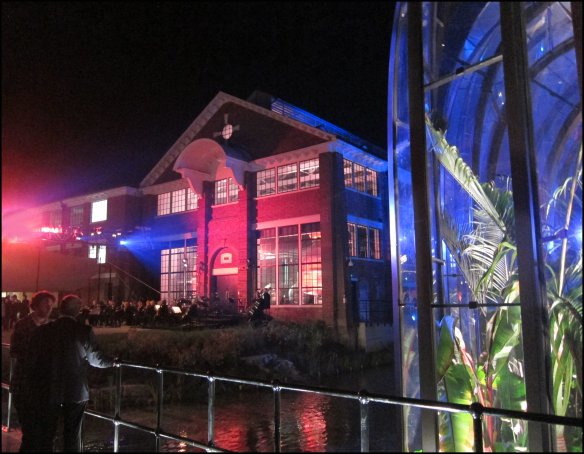
The Distillery in the background, toprical glasshouse to the right and designer Thomas Heatherwick in the foreground
As we arrived, the most striking feature was the glistening River Test, which runs through the site, surrounded on both sides by centuries-old mill buildings, all newly refurbished.
After some welcome drinks, including the delicious “Laverstoke”, including the non-alcoholic one that I picked up by accident, I was whisked upstairs to have a chat with Valarie Brass Global Brand Director for Gin at Bacardi Global Brands. This was a great chance to discuss some of the bigger picture aspects of Bombay Sapphire and the key focuses of Bombay Sapphire: “Creativity”, “Beauty” and “Expression”. There was obvious excitement about have a place to “bring to life key principles” and to “talk about what we believe in” something that I can imagine was quite difficult before such a large and growing brand had a dedicated base.
The highlight of the evening was the unveiling of the two glasshouses: one tropical, and one mediterranean in climate. These were designed by Heatherwick Studios and are heated by the residual heat from the stills. Even though I had seen designs and 3D models of them, I nonetheless wasn’t quite prepared for how spectacular they were. The chance to see so many classic gin botanicals all growing together was fascinating.
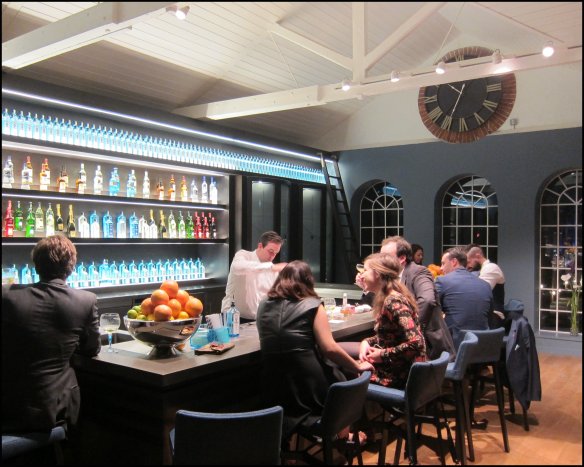
The “secret bar” which will be Sam Carter’s (at the bar) new “office” about 10 minutes after this picture was taken it was packed wall to wall.
After this excitement I decided to slip off to the “secret bar” (Empire Bar) which was being tended by the distillery’s in-house senior brand ambassador Sam Carter. This bar doubles as a training facility for a variety of guests, trade and bartenders. Up here I had a mix of Bombay Sapphire, Pink Grapefruit Juice and Vanilla Syrup – the grapefruit and vanilla producing a chocolate flavour in addition to their own character – a phenomenon known as “Transmogrification” – something I consider a Sam Carter signature.
After that joint started jumping (see picture) I went in search of further adventure and found another bar inside one of the old vaults where the finished banknote were kept. This came complete with the original cast iron grate door at the entry. Here I was treated to an Aviation cocktail and a pleasant chat with gin experts Geraldine Coates and Patience Gould where we also had a sneaky sip of Bombay Dry at the new ABV.
No Bombay Sapphire event would be complete without one of their glamorous gift bags, and this event did not disappoint. In addition to some fine barware we got a bottle of the rare Laverstoke Mill Edition of Bombay Sapphire – beautifully packaged but for me, even more excitingly, bottled at an unusual 49%ABV. See here for tasting notes.
All-in-all I had high hopes for the distillery and my expectations were exceeded; an opening on this scale will never happen again and so it was great to be part of it. The distillery itself opens to the public in October and for me it is a must for gin fans and a great visit for anyone who is a fan of botany, stunning scenery or historic architecture.
For more details check out their website. Later this year National Geographic will be screening a documnetary about the creation of the distillery.

